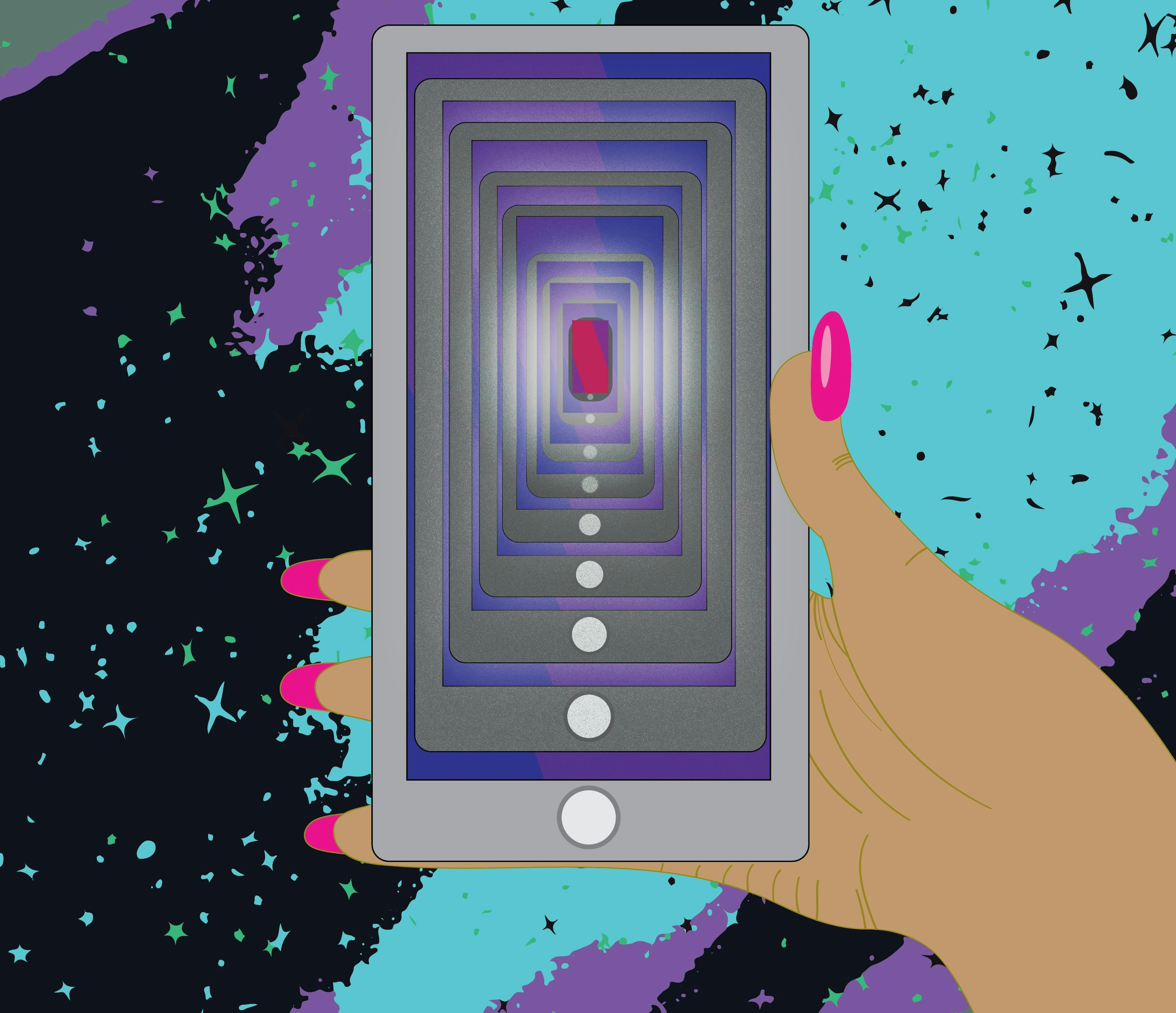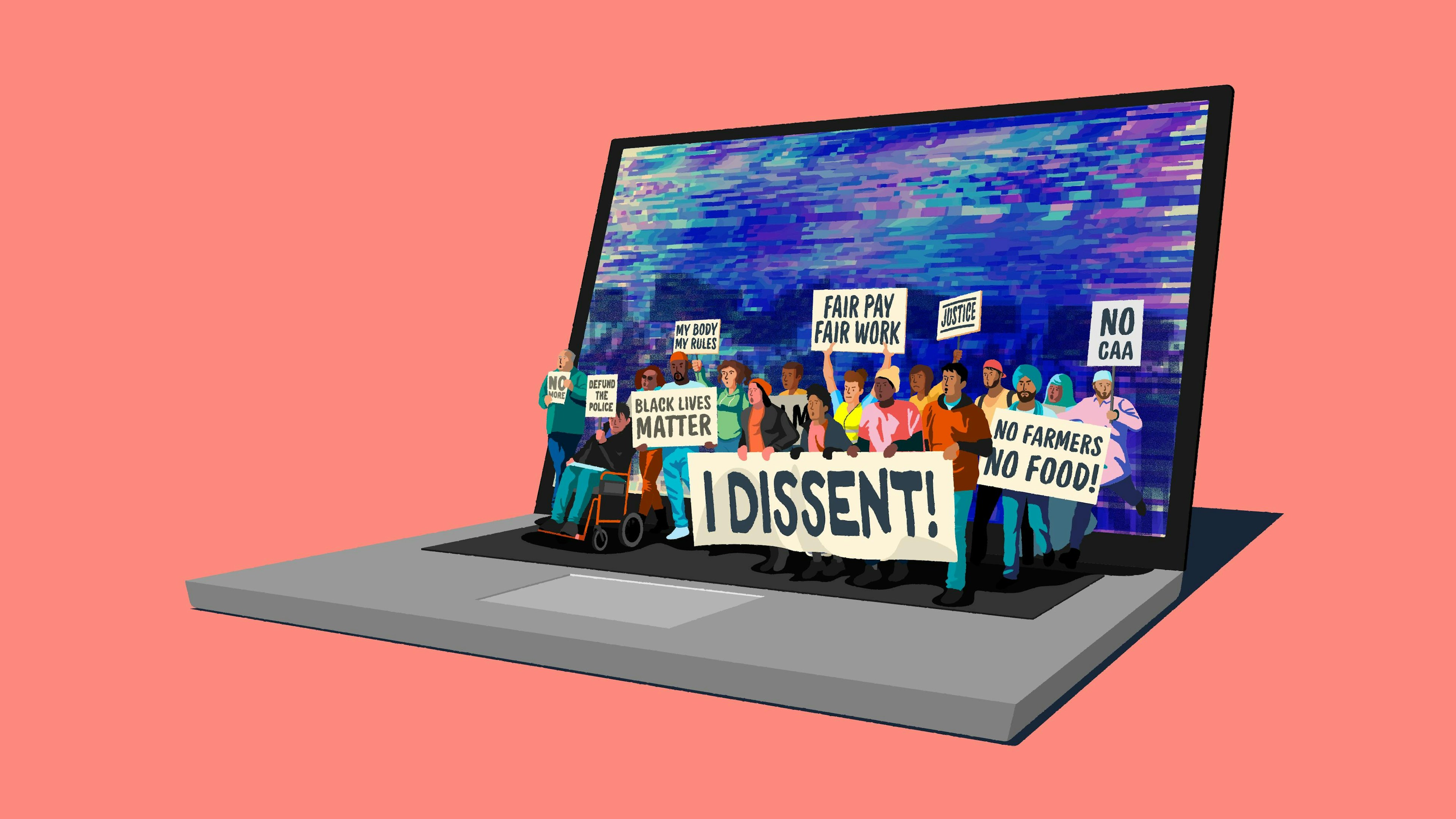The emotional era: Are technologies changing how we feel?

Don’t read the comments! So goes long-standing foundational advice for being online today. Still, it’s not easy to numb oneself to the discharge of intense emotions on the internet.
Blogs, forums, online comment sections—all are replete with bold expressions of raw sentiment, encompassing displays of love and adoration … but also hate, disgust and revulsion. Once people are visible online, they can become targets of abuse and criticism for physical traits like nose shape, hair texture or teeth alignment. Political representatives are regularly subjected to vile abuse in public and in private. The same is true for women, the LGBTQIA+ community, and racial and ethnic minorities.
Outrage might feel ubiquitous.
Some call this period the era of feelings or emotion, typified by the massive visibility of unrepressed feelings, positive and negative. Information and communication technologies are heavily implicated in this new affective paradigm. If we consider recent findings on the prevalence of online hate speech, cyber crime and social media addiction, we could be forgiven for wondering, does the internet bring out the worst in people?
Maybe that’s not what we should be asking.
Computer-mediated communication facilitates alternative power relations and social conventions, normalising new ways of speaking and acting. This transformation characterises the offline as much as the online, potentially signalling a broader shift in the status of feeling and emotion in everyday life and politics.
What’s peculiar about this so-called emotional era, what are its implications, and what role might technology play in its transformations?
Rethinking Descartes’ Error
Emotions (referring to the physiological sensation) and feelings (referring to the psychological awareness of those sensations) are a longstanding object of research. Emotion in particular features centrally in centuries of thinking about rationality; one of the earliest major players in the field of rationalism, René Descartes, was a driving force in the distinction between emotion and reason. This dualism endured in various forms for hundreds of years. The last few decades have subjected it to critique, notably by neuroscientist Antonio Damasio.
One core critique of the reason/emotion binary is that cognition is inherently embodied. Research shows that even in the work of Descartes, a nascent view on the embodied nature of reason and emotion, together, was already palpable. Scientific advances contribute increasingly to a new view of emotions, not as blockers of a critical mind, but as powerful mechanisms of thought in their own right.
This transformation is helped by advances in neuroscience, which help us better understand how emotions and reason operate in the brain. Rather than working in opposition, research shows they function in close tandem. Emotions play a major role in decision-making. They impact political attitudes and behaviour, often thought to be the preserve of purely rational actors.
The reality of emotional decision-making is clearly expressed in advertising and marketing strategies, but the principle applies more generally. As María José Carmona writes, “Reason can serve as a filter for discarding less sensible options. But the final decision is emotional.”

"Melody of the Forbidden Wish," 2020, Vivien Szaniszlo.
The cultural and historical specificity of emotion
Even if public understanding of emotion’s cognitive role is shifting, there remain cultural narratives about what emotions mean. In the 1960s and 1970s, US psychologist Paul Ekman identified six basic emotions that he claimed were universal to humans across cultures—the so-called “Ekman emotions." Despite the difficulties Ekman himself faced in cross-cultural research on emotional expression in Papua New Guinea, his theory was broadly accepted for decades. More recently, Ekman’s ideas were challenged, giving the cultural and historical specificity of emotions greater attention.
As a student in the 1970s, Paula Marantz Cohen wrote, “Crying in a professor’s office or challenging the assignment of a particular text would have marked me as capricious and unduly sensitive. To take difficulties personally was to be weak and foolish.” In reality, historically-rooted norms and rules of feeling are the focus of major ongoing research, particularly with respect to the relationship of emotional codes and lexicons to institutions like the family, law, religion, and the state.
Emotions aren’t just historically specific, then; they can vary across cultures and societies. This means “the social signal value of emotional expressions”—how emotions are socially perceived and used—“may vary with culture as a function of cultural differences.” Trobriand Islanders have been shown to interpret a gasping face as denoting anger, when the same expression is classed in Western studies as expressing fear. This is one among myriad cross-cultural differences in how people attribute emotion and social motives to the same expressions.
From this perspective, emotions are in reality highly context-dependent. Nowhere is this more apparent than in contemporary computer-mediated communication.
Emotion and computer-mediated discourse
The form of our communication matters: Camera phones and social media have played a role in the rise of highly visual styles of online communication. Most social media heavily rely on video-image-formatted content, such that certain platforms (ex. Instagram, Snapchat) are defined as highly-visual social media (HVSM).
Research confirms that content with images receives greater visual attention and interaction than content without. It is not surprising that we have witnessed the rapid transition from a textual consumption of information to a visual one.
Still, images and sounds impact individuals differently than words do. Audiovisual media produce faster reactions, and more effectively grab our attention, than textual content. This is true of our capacity to retain information, too, which is vastly improved by adding images and illustrations. Javier Serrano, a Spanish scholar studying social media, argues:
“The digital architecture of social media privileges the expression of emotions. It privileges the audiovisual over the written, the controversial over the moderate. All of this makes us more emotional.”
Social media users frequently encounter restrictive paralinguistic digital affordances; for example, we are rarely able to signal “dislike” of content. Still, the expressive opportunities users do have are important. In recent years, Facebook added sad and angry reaction buttons, already shown to have an excessive impact on the appearance of a user’s feed. And though YouTube and Reddit allow “downvoting,” it’s still difficult to signal ambivalence or equivocation through paralinguistic signs; at the same time, these features have the capacity to negatively impact content creators.
A media environment saturated in both affect and information
The lack of paralinguistic tools for expressing negative sentiment doesn’t necessarily lead to the expression of positive feelings. Researchers at Yale demonstrate that social media platforms amplify collective moral outrage. Their research showed that effusive and morally outraged language leads to greater engagement in terms of likes and shares, thus serving as a powerful motivator to engage in such expressions. Platform algorithms likewise play an important role in driving this symbiotic system of outrage and engagement.
There are many processes at play here, with significant knock-on effects. For some, like media agency director Julian Wiehl, we have become "emotional junkies." According to historian Olivier Saal, how Facebook or Twitter shape their algorithm “fuels the fire of hate speech.” This claim is supported by recent research that finds increasing numbers of people witnessing, or being subject to, cyberbullying and other forms of online abuse. Even the abundance of information people encounter online has been linked to the spread of misinformation that drives moral outrage.
Emotion and identity play a central role. Priming people’s emotions has been shown to boost belief in fake news. At the same time, information spreads differentially within networks marked by social and political in-groups and out-groups, highlighting the role of identity in shaping the spread of outrage.

"In the Shelter of My Unspoken Words," 2020, Vivien Szaniszlo.
Computers compute, humans feel
The information and affective environment produced through social media and communications technologies might be conducive to more outpourings of sentiment. But what about emotional expression at the level of technologies themselves? AI researcher Jean-Claude Heudin explains that, to be qualified as an emotional creature, you must fulfil three requirements: The capacity to express, capacity to detect, and capacity to personally feel emotions. Computational systems are relatively well-qualified for the first two tasks, but struggle with the third.
After years being fed images of human faces displaying western-defined expressions of joy, anger or disgust, AI is now skilled enough to disambiguate them. Robots can also fake emotions well. For example, Gregory Trafton, director of the Intelligent Systems Section at the Navy AI centre, which is deploying the firefighter robot Octavia, believes the lines blur between logical programmed thinking and empathy. “Octavia isn’t programmed with emotional models. Her theory of mind is a cognitive pattern,” Trafton says. “But it functions a lot like empathy, that most cherished of all human emotions.”
Although artificially intelligent systems can mimic empathy through programming, it doesn't mean they can experience it. Emotion, as we understand it, is deeply embodied, mentally and physically. This defines the human experience of emotions, like empathy, and continues to distinguish us from artificially intelligent machines … for the time being.
To feel is, in this sense, something of great value. The irreproducibility of genuine emotions stands as testament. But, perhaps more ambivalently, emotions are also valuable because they have become heavily monetised in a datafied economy that thrives on outrage and affect.
Quantifying and controlling emotion
Affective computing refers to the capacity for computers and systems to “identify, process, and simulate human feelings and emotions.” Because feelings are consciously experienced, they can be measured through self-reporting tools.
Emotions, insofar as they are physical responses, can also be measured through physiological reactions, like pupil dilation, skin conductivity, brain activity, heart rate, and facial expressions. A range of apps have been created that allegedly enable greater awareness and control of feeling and emotions at a personal level, but they are also implicated in practises related to data and securitisation.
Emotion has much to do with security. Discourses around security frequently draw on emotional tropes as sources of validation and legitimation. In the domain of immigration management, though, we see an altogether more tangible application of science and tech, built around securitised understandings of emotion. Systems for automating decisions about the threat-level of individuals have been developed, including the employment of biometric technologies for behaviour detection in counter-terrorism.

"Circus of Overthinking," 2020, Vivien Szaniszlo.
Boys don’t cry?
Whether or not one subscribes to the idea of an emotional era, distinct from what came before, technologies undeniably facilitate a shift in public understanding of the proper place for sentiment. Though these ideas are often culturally entrenched, they are nevertheless open to transformation.
Now we can appreciate a re-articulation of what it means to be emotional. In this space, old ideas about the meaning of feelings are being dismantled, led in part by developments in computer programming, but also in response to uses of media. Might the rise of this new paradigm of feeling therefore have some benefits? It’s certainly possible.
Take the adage “boys don’t cry,” which seeks to regulate the emotional expression of men and boys in a variety of cultural contexts. During the mid-twentieth century, Margaret Mead’s work on comparative emotions revealed cultural contexts where males are characterised by emotional dependency, ostentation and expressivity. This contrasts dramatically with established Western notions of masculinity, and reveals that gendered expression of emotion is open to renegotiation and redefinition. If one outcome of a new paradigm of feeling is for emotional expression to become more commonplace, regardless of gender, then the emotional era could disrupt highly gendered concepts of expression that frequently have negative impacts on wellbeing.
This perspective on the emotional era, as an opportunity space, resonates little with dystopian visions of datafied emotivity, where emotion and surveillance are seen to go hand-in-hand. As with all technologies, outcomes can be good, bad or neutral, but they are always somehow the product of human agency. The role of tech in transforming how we understand emotion must be understood, certainly, but looking to the future also requires us to think about how regimes of emotion can actively be transformed, not merely for profit, but in the interest of those who feel them.
28 Jul 2022
-
Nathalie Béchet and Anthony Kelly
Illustrations by Vivien Szaniszlo, a Hungarian surrealist painter dedicated to fighting the excessive skewers and lies of social media. She works professionally in traditional media. The most important thing for her is to convey strong emotions, expressing deep thoughts with her interesting compositions and use of colour. Her paintings detail the dark corners of the human mind and soul, moving the viewer out of the monotonous comfort zones. Vivien is the creator of the "Unhappy Paintings" Movement, encouraging viewers not to be ashamed to show their feelings, even if they are difficult and painful. In her art, Vivien strives to find the delicate balance between life and death, as well as to show the power inherent in the soul, an opportunity hidden in hope. Her rich expression opens a window to a magical world between existence and fate.
02/03
Related Insights
03/03
L’Atelier is a data intelligence company based in Paris.
We use advanced machine learning and generative AI to identify emerging technologies and analyse their impact on countries, companies, and capital.


